Where are lateral ventricles located?
Lateral ventricle is a ‘C’ shaped cavity of cerebral hemishphere. There are two lateral ventricles, one in each cerebral hemisphere. Each lateral ventricle communicates with the third ventricle through the interventricular foramen/foramen of Monro.
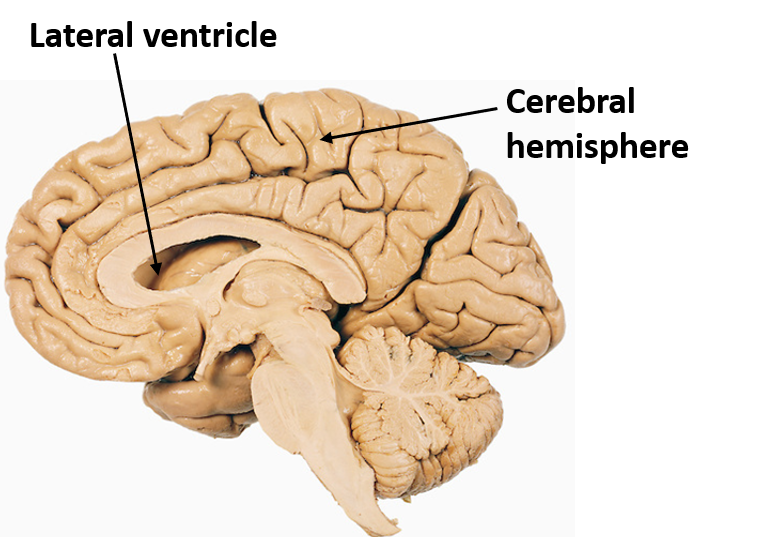
Name the parts of Lateral ventricles.
Each lateral ventricle is ‘C’ shaped cavity divided into 4 parts:
- Central part: It is located in the parietal lobe of cerebrum. From the central part three extensions are given which are as follows:
- Anterior horn in the frontal lobe.
- Posterior horn in the occipital lobe
- Inferior horn in the temporal horn.

*The area where the central part meets the posterior and inferior horn is called Trigone.
Describe briefly the boundaries of the various parts of Lateral ventricles.
- Central part: The central part of lateral ventricle is located in the parital lobe of cerebrum. It is continuous with the anterior horn at the level of interventricular foramen. Posteriorly it reaches till the level of splenium of corpus callosum. It is triangular in cross section. It has a roof , floor and medial wall: the roof and the floor meet laterally.
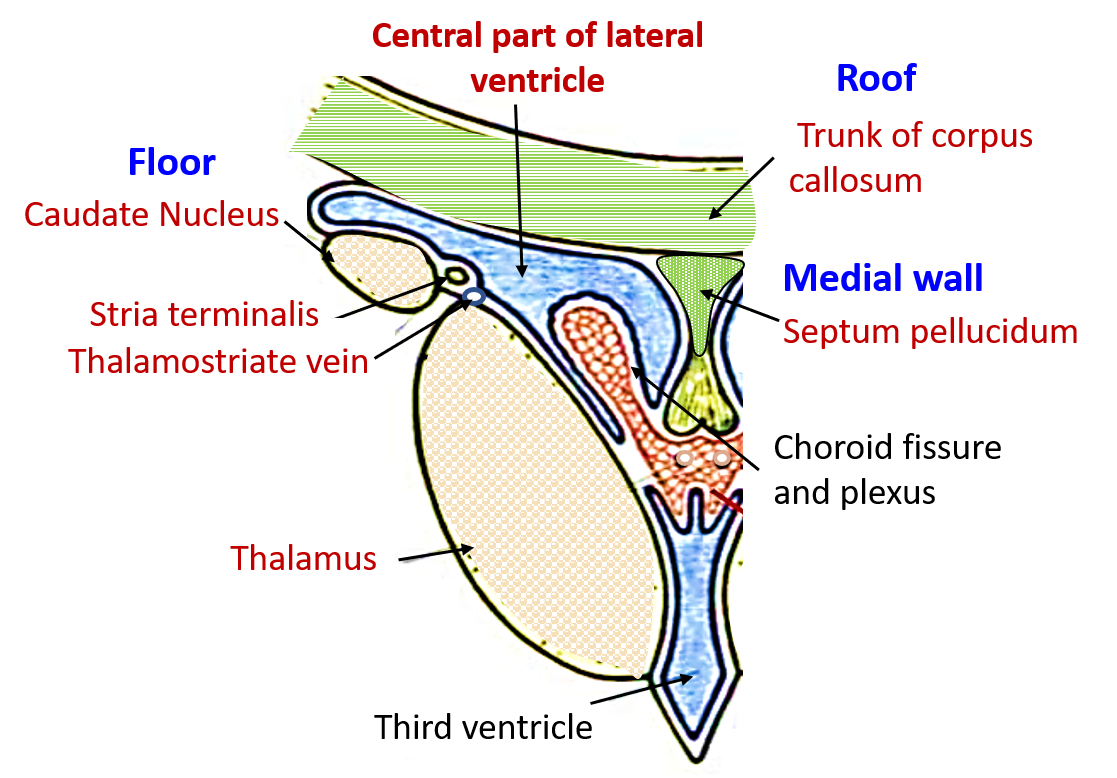
- Roof of central part is formed by trunk of corpus callosum.
- Floor is formed by the following structures from medial to lateral:
- Superior surface of thalamus
- Thalamostriate vein
- Stria terminalis*
- Body of caudate nucleus
- Medial wall is formed by septum pellucidum and body of the fornix.
b. Anterior horn: Anterior horn is continuation of the central part into the frontal lobe. the two parts are separated by an imaginary line passing through the interventricular foramen. It is also triangular in section and has the following walls: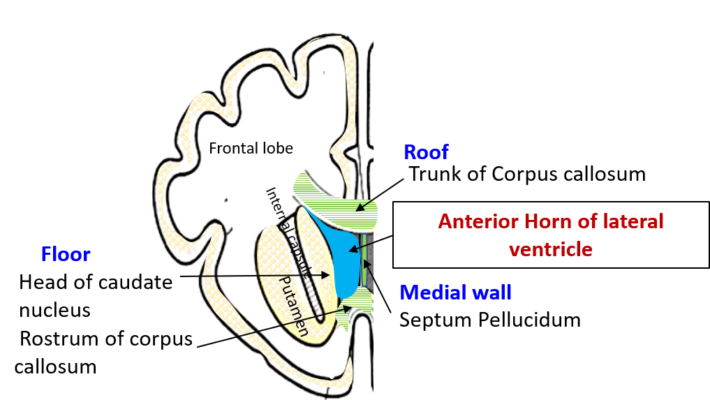
- Roof is formed by the trunk of corpus callosum.
- Floor is formed by the head of the caudate nucleus and rostrum of corpus callosum.
- Medial wall is formed by septum pellucidum.
- Anterior wall is formed by the genu of corpus callosum.
c. Posterior horn: It extends posteriorly into occipital lobe. It too has three walls i.e. roog medial and lateral wall.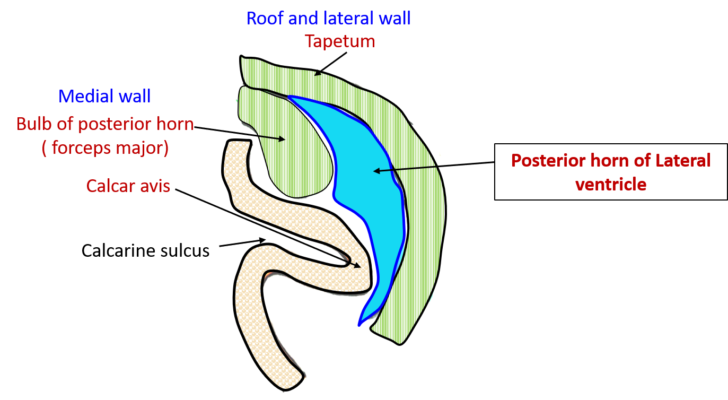
- Roof and lateral wall are formed by tapetum (fibers from corpus callosum) .
- Medial wall shows two elevations.
- Upper elevation is bulb of posterior horn produced by forceps major ( fibers of corpus callosum).
- Lower elevation is calcar avis which is produced by the calcarine sulcus.
d. Inferior horn: It runs downwards and forwards into the temporal horn from the posterior end of the central part of lateral ventricle. It is a narrow cavity and is bounded by the following structures: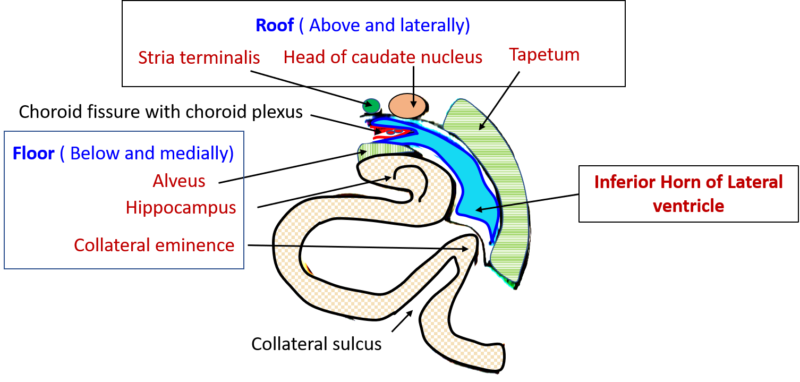
- Above and laterally the Roof is formed by the stria terminalis* medially and tail of caudate nucleus laterally.
- Below and medially the Floor is formed by the hippocampus (covered by fibers called alveus medially and collateral eminence ( produced by collateral sulcus) laterally.
What is stria terminalis?
Stria terminalis
- is a bundle of fibers that arises from amygdaloid body that first runs backwards in the roof of inferior horn of lateral ventricle and than wind upwards and runs forwards in the floor of the the central part.
- It terminates near the interventricular formen by dividing into small bundles which end in septal area, hypothalamus, anterior perforated substance .
- Some of the fibers cross to the opposite side in the anterior commissure to reach the opposite amgdaloid body.
Describe briefly the choroid fissure and the choroid plexus of lateral ventricle.
Choroid Fissure: In the central part of the lateral ventricle, the space between the fornix above and the thalamus below is called the choroid fissure.
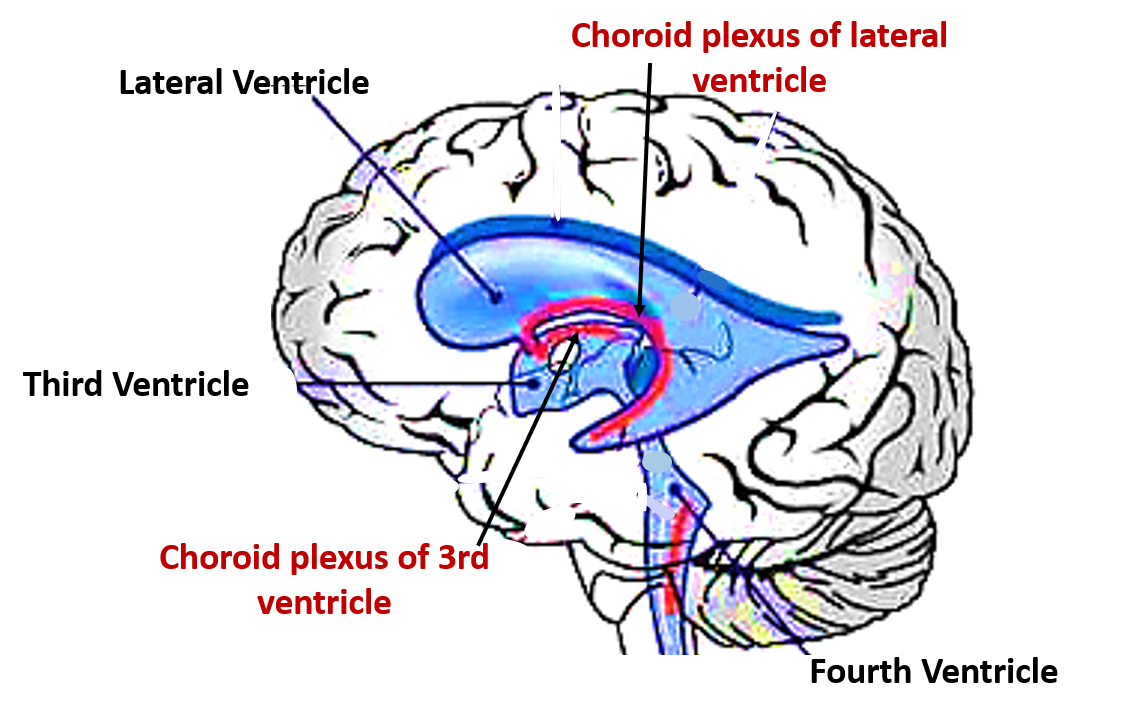
Choroid plexus: The lateral parts of a triagular fold of pia mater (tela choroidea – is common for the two lateral and third ventricles) invaginate into the ateral ventricles through the choroid fissures. Within each lateral edge of tela choroidea are the plexuses of capillaries called choroid plexus. The tela choroidea and other structures forming walls of lateral ventricle are lined by ependyma.
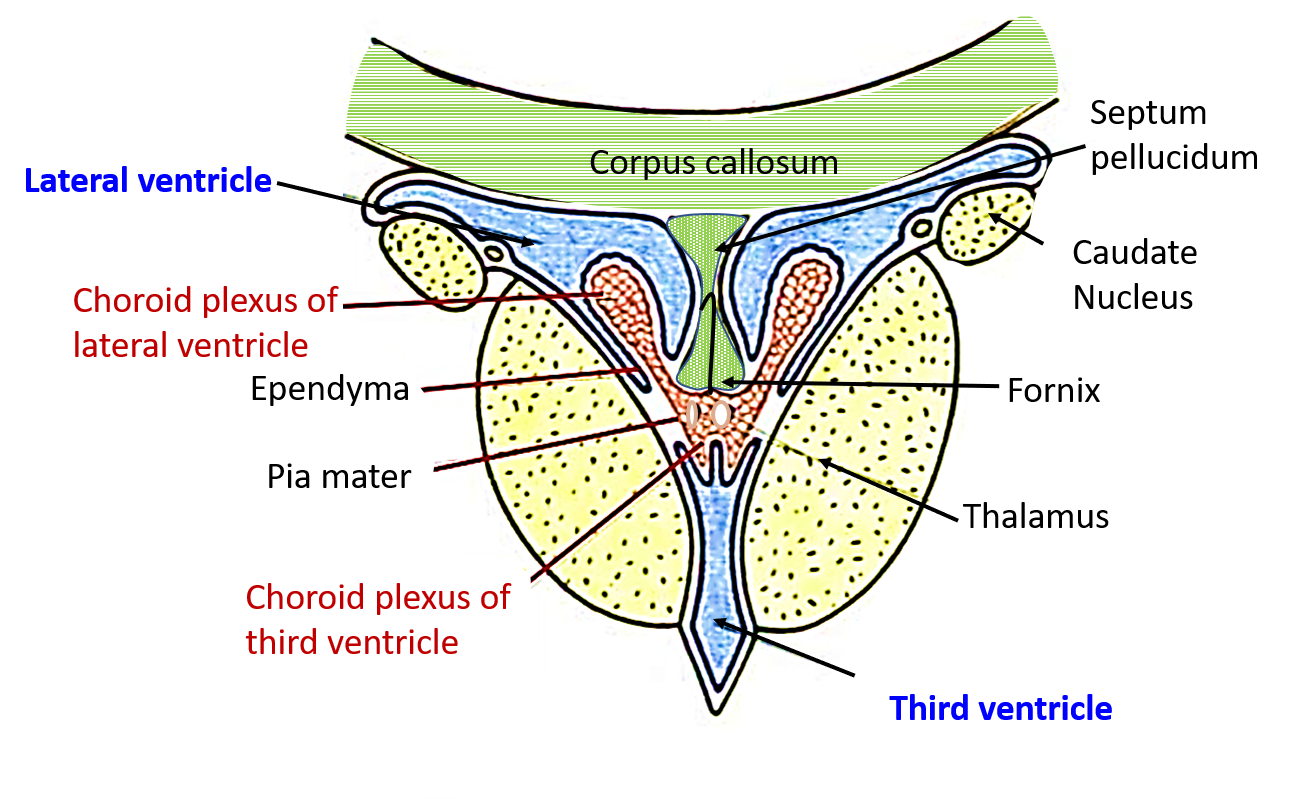

EXCELLENT